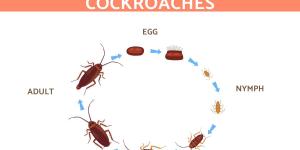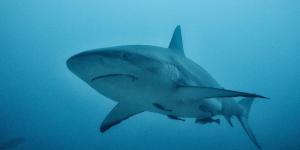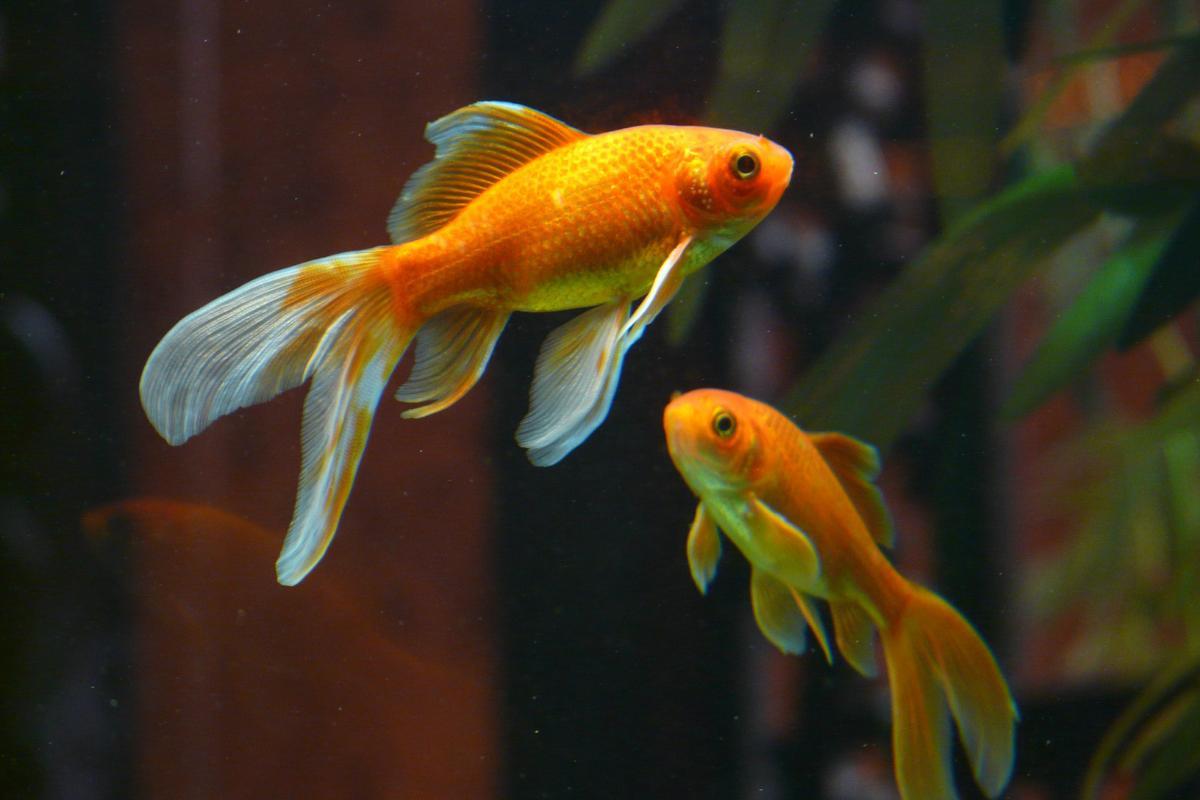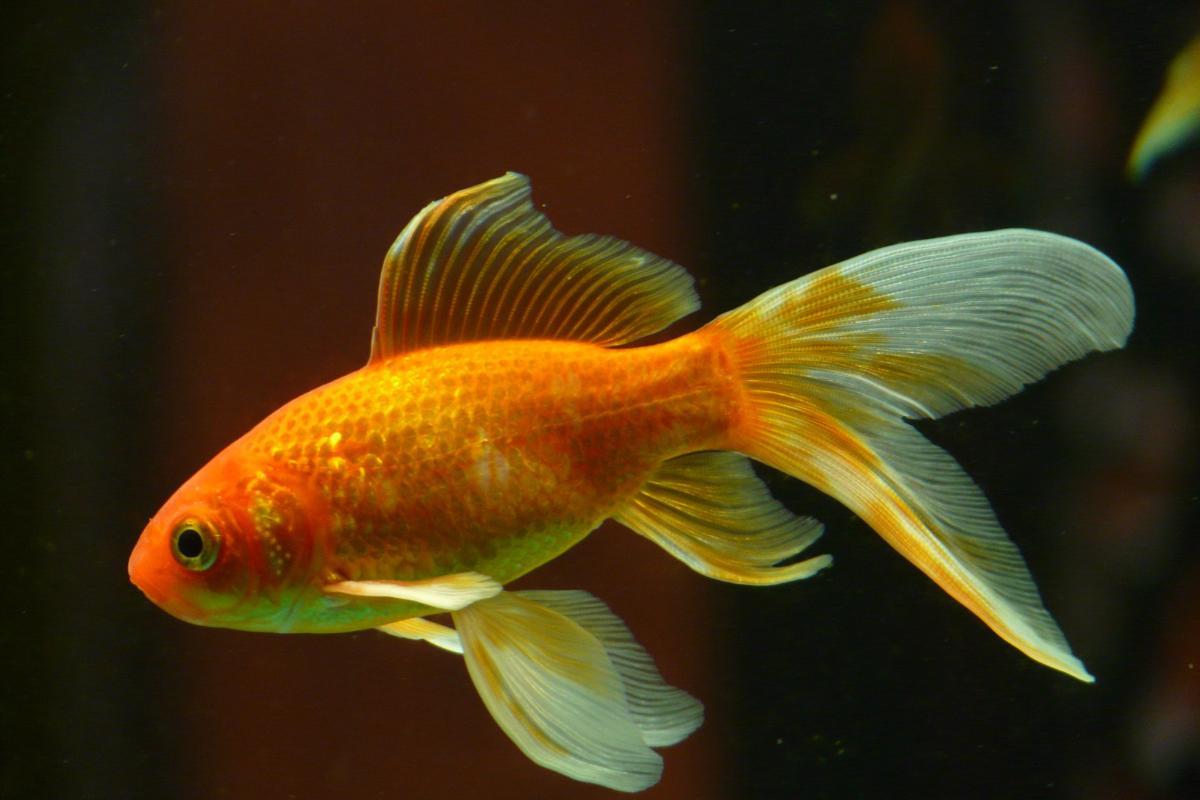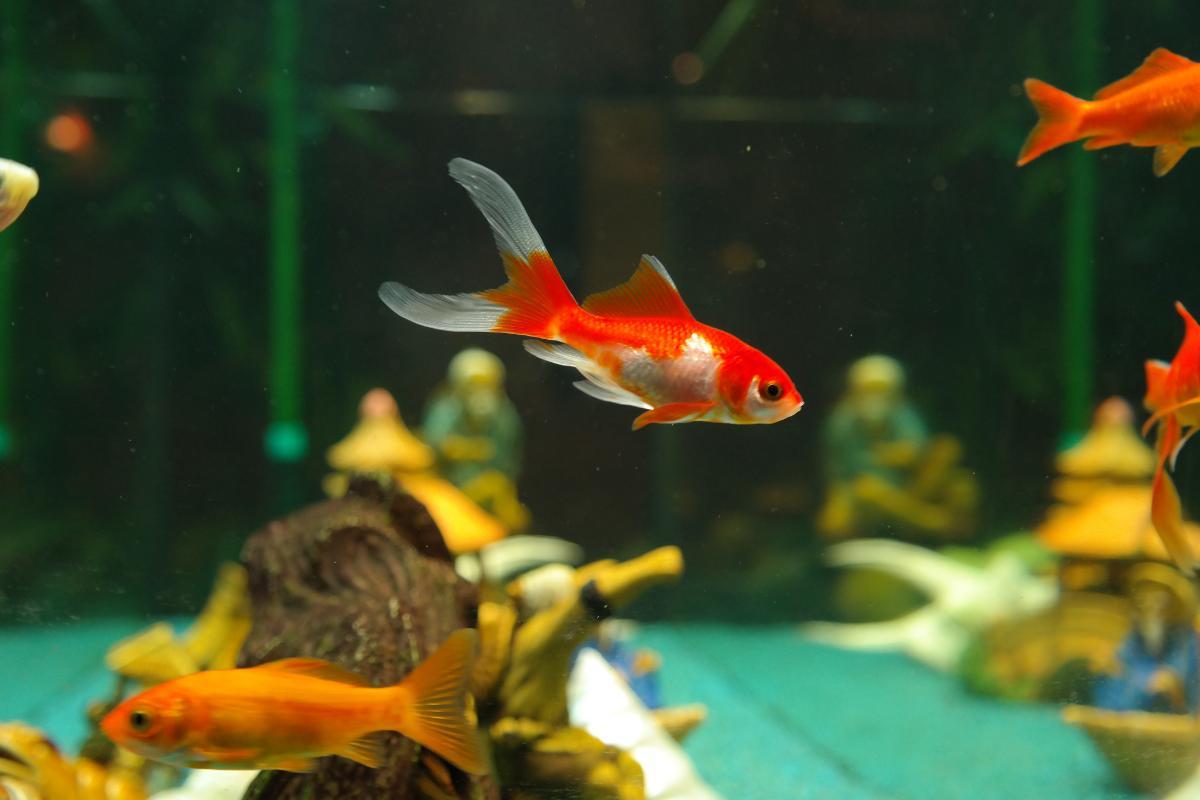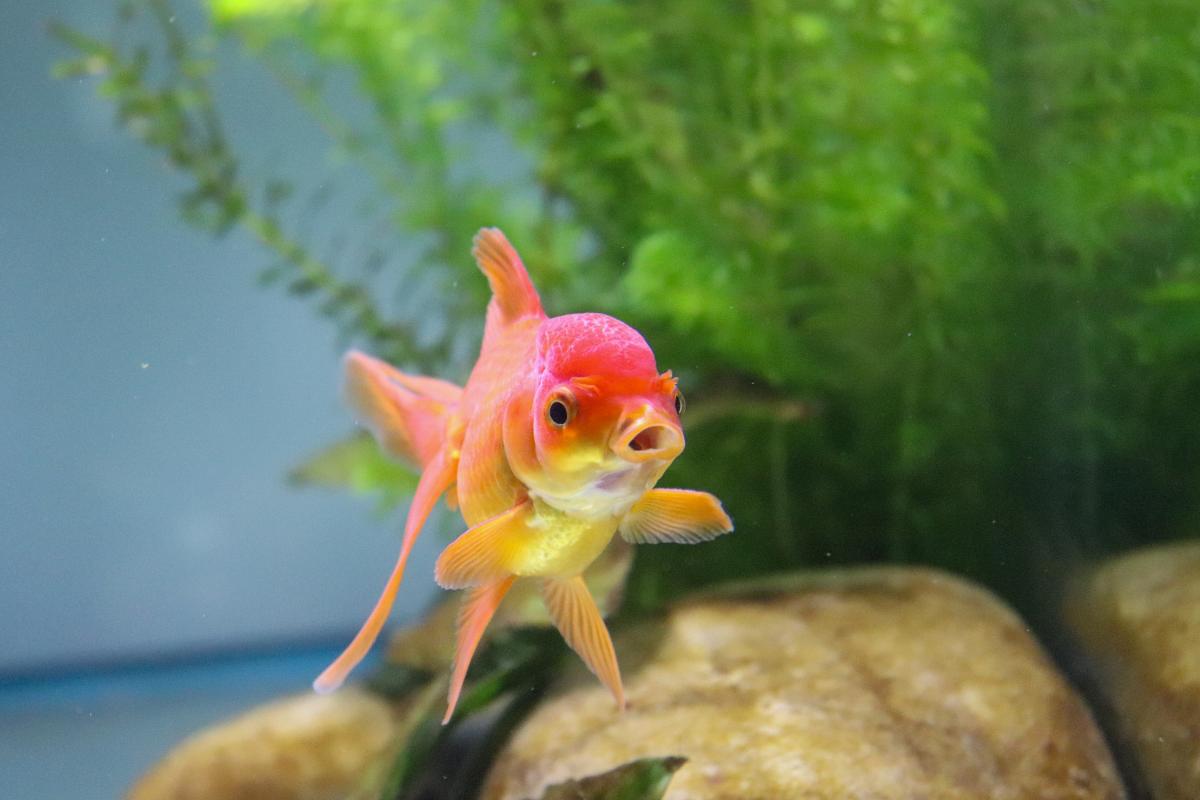How Long Do Goldfish Live?

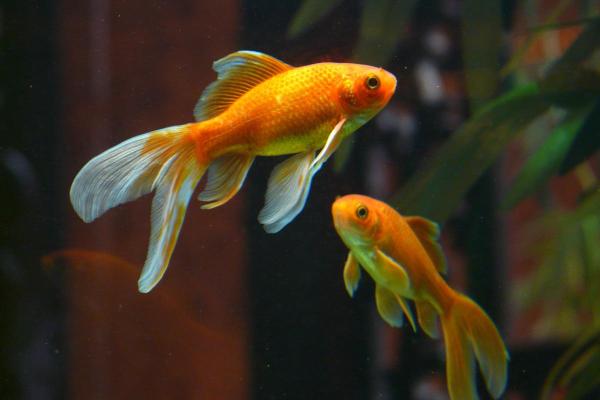
"Despite their global popularity, goldfish are often wrongly perceived as short-lived, disposable pets. In reality, these resilient fish can thrive for 10-15 years, or more, with attentive care. This raises a common question among owners: what is their typical lifespan, and how is it influenced by environment, diet, and care?
In this AnimalWised article, we will explore the average lifespan of goldfish, the key factors that affect their longevity, and practical methods to ensure a long and healthy life for your fish.
What is the lifecycle of a goldfish?
Goldfish develop through four key stages:
1. Egg stage:
Females release hundreds to thousands of adhesive eggs that attach to plants or surfaces. Males fertilize these by releasing sperm. Eggs hatch 48-72 hours after fertilization, varying with water temperature.
The eggs appear translucent with a visible dark spot inside that will develop into the fry. Healthy eggs maintain this clarity, while white or opaque eggs are typically unfertilized or dead.
2. Fry stage:
Newly hatched fry are transparent and tiny, measuring just 4-7mm in length. They feed on attached yolk sacs for 2-3 days before switching to microorganisms and plankton.
Many don't survive this vulnerable stage in natural settings. During their first weeks, fry require multiple small feedings daily and pristine water conditions to thrive.
3. Juvenile growth:
Young goldfish develop quickly as their bodies strengthen, fins form, and coloration emerges. Water quality, nutrition, and space directly impact their growth rate.
Juveniles may change color several times before developing their permanent coloration. This stage typically lasts 3-4 months, during which they can grow to 1-2 inches in length.
4. Maturity:
Sexual maturity occurs at 6-12 months, though goldfish continue growing for years afterward, especially in spacious environments like ponds. Mature males develop breeding tubercles (small white spots) on their gill covers and pectoral fins during breeding season.
With good care, goldfish often live 10-15 years or more, with pond specimens occasionally reaching 20+ years. Their growth slows, but doesn't completely stop as they age.
Factors that affect goldfish lifespan
Goldfish lifespan varies greatly based on care quality. With good care, goldfish can reach 20-30 years, though many don't live this long because of poor conditions that affect their health and development. Some of these factors are:
Water quality:
Goldfish are sensitive to dirty water as waste products can poison them. Since they produce more waste than many other fish, tanks need effective filtration and 20-30% water changes weekly to maintain water quality.
Regular testing with water test kits helps monitor conditions and prevent health issues that drastically reduce lifespan.
Space:
Proper space directly impacts goldfish health and longevity. In small tanks, they can't reach full size and often develop stunted growth and diseases. A large tank or pond allows proper development, with at least 20 gallons for the first goldfish and 10 additional gallons for each extra fish. Though fancy varieties need less space than common goldfish, larger tanks benefit all types by diluting waste and providing swimming room.
Diet:
A balanced diet supports goldfish health and extends lifespan. These omnivores need a mix of fish food flakes, plant matter, and occasional protein foods like bloodworms. Since goldfish lack true stomachs, their unique digestive system works differently from other fish, making proper feeding crucial.
Overfeeding not only leads to obesity but also dirties water quickly, creating a dangerous cycle of poor conditions and illness. Limit feeding to what they can consume in 2-3 minutes, once or twice daily.
Temperature:
While adaptable to various temperatures, goldfish thrive between 18°C and 22°C (64-72°F). Sudden changes stress their systems and weaken immunity, opening the door to infections and shortened lifespans.
Common goldfish generally handle colder water better than fancy varieties, allowing them to survive winter in deep ponds that don't freeze solid. Maintaining stable temperatures prevents stress-related illnesses that can cut years off their potential lifespan.
Finally, it is important to note that all these care factors work together to build strong immunity. Well-maintained goldfish resist common ailments like infections, parasites, and fin rot that plague poorly kept specimens. Watch for warning signs including unusual swimming, color loss, damaged fins, body spots, or appetite changes.
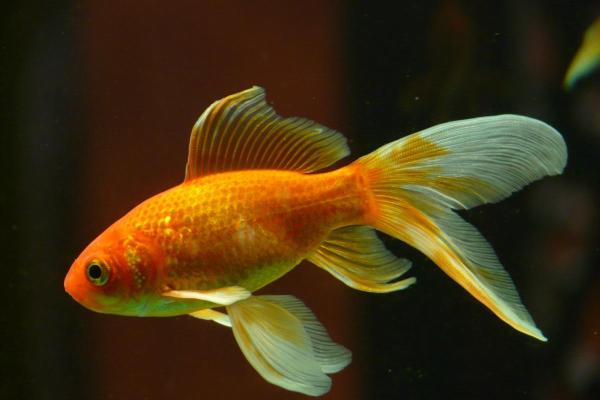
How long does a goldfish live in a fish tank?
The lifespan of a goldfish in a tank depends largely on the size of the container and the care it receives. Unfortunately, many people keep their goldfish in small tanks, which drastically limits their lifespan.
Small tanks create several serious problems for goldfish health. First, they restrict movement and growth. Keep in mind that goldfish can grow up to 25-30 cm in proper conditions, but in small containers, their growth becomes stunted, compromising their overall health.
Without adequate filtration, fish waste accumulates quickly, increasing levels of ammonia and nitrites, which are toxic to goldfish. This pollution builds up much faster in smaller volumes of water.
Oxygen deprivation is another challenge in small tanks. Limited surface area reduces gas exchange, lowering oxygen levels in the water. This constant stress weakens the fish's immune system and damages vital organs over time.
Ready to expand your aquatic family? Learn which fish species are compatible with goldfish in our other article.
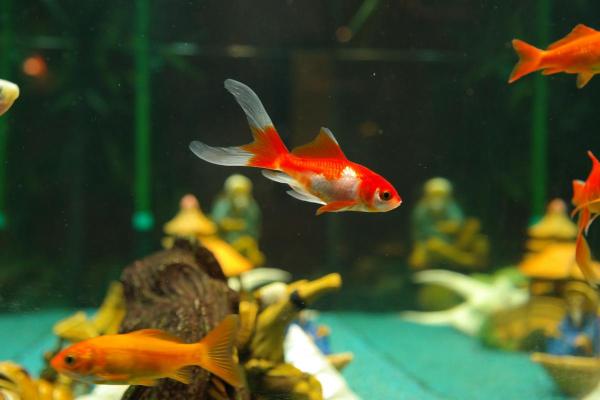
Will baby fish survive in my tank?
Baby fish survival depends on several factors beyond basic adult fish care. Adult fish typically view fry as food, regardless of species. Without adequate hiding places or separation, most babies will be eaten within days.
Fry have unique nutritional needs and tiny mouths requiring infusoria or commercial fry food in multiple small feedings throughout the day. Standard filters can easily suck up tiny fry, so sponge filters or intake guards are necessary to prevent this common cause of loss.
Parental behavior affects survival rates significantly. Some species actively protect their young (certain cichlids), while others show no parental care. Livebearers like guppies produce more developed babies than egg-layers like goldfish, giving them a survival advantage.
In this sense, a dedicated breeding tank significantly improves survival chances if raising baby fish is your goal.
What does a baby goldfish look like?
A baby goldfish is translucent, and often lacks the bright orange or gold color of an adult. They usually appear gray, brown, or pale to help them blend into their environment and avoid predators. Their bodies are elongated, and their fins are underdeveloped.
How many days can a goldfish go without eating?
A goldfish can survive up to two weeks without food, but this is not ideal. Their metabolism slows down, and they start using stored energy. However, prolonged starvation weakens their immune system, making them vulnerable to disease. If you're leaving for a few days, a healthy, well-fed goldfish should be fine, but for longer periods, consider an automatic feeder or asking someone to feed them.
Wonder how fish reproduction differs from mammals? Our other article explains the fascinating process of fish pregnancy and gestation periods.

How to make your goldfish live longer
Goldfish can live for decades with proper care, contrary to the myth that they only live a few months. Here are the key ways to maximize your goldfish's lifespan:
- Provide at least 20 gallons for the first goldfish and 10 additional gallons for each additional fish.
- Avoid bowls completely because they are too small and lack filtration.
- Use a quality filter rated for your tank size and perform 25-30% water changes weekly.
- Feed your goldfish small portions two to three times daily, instead of one large meal. To prevent digestive problems, fast them for one day each week.
- Choose aquarium substrate and decorations that are smooth and won't snag fins. Sharp or rough decorations should be avoided to protect your fish from injuries.
- Implement a quarantine period of two to four weeks for all new fish to safeguard your main tank from potential diseases. Prepare a hospital tank for the effective treatment of any sick fish
With attentive care, your goldfish can become a long-term companion rather than a short-lived pet. Wondering how your goldfish's lifespan compares to other aquarium fish? Our other article explores the typical lifespans of various popular species.
If you want to read similar articles to How Long Do Goldfish Live?, we recommend you visit our Facts about the animal kingdom category.
- Brown, C., Wolfenden, D., & Sneddon, L. (2018). Goldfish (Carassius auratus) . Companion animal care and welfare: the UFAW companion animal handbook, 467-478.
- Ford, T., & Beitinger, T. L. (2005). Temperature tolerance in the goldfish, Carassius auratus . Journal of Thermal Biology, 30(2), 147-152.
- Gandar, A., Jean, S., Canal, J., Marty-Gasset, N., Gilbert, F., & Laffaille, P. (2016). Multistress effects on goldfish (Carassius auratus) behavior and metabolism . Environmental Science and Pollution Research, 23, 3184-3194.
- Kang, S.G., Choi, J.W., & An, K.G. (2015). Physicochemical tolerance ranges and ecological characteristics in two different populations of Carassius auratus and Cyprinus carpio . Journal of Ecology and Environment, 38(2), 195-211.
- Ostrow, M.E. 2003. Goldfish (Barron's Complete Pet Owner's Manuals) . Barron's Educational Series, 96 pp.



